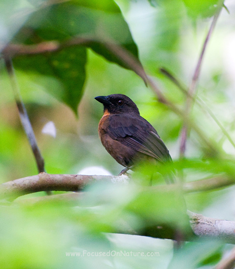The Osa Peninsula of Costa Rica, and its environs, is one of the most biologically diverse places on earth, however, as in much of Latin America and world, bird populations are declining due to habitat loss, degradation and fragmentation. Billions of birds funnel down through Mexico and Central America from the United States and Canada to overwinter in and around the Osa Peninsula during their non-breeding period and depend on the warm tropical landscape for their survival during a large percentage of their lifecycle. Of the more than 450 species of birds residing on the Osa, almost one quarter are Neotropical winter residents or passage migrant birds, a handful of which are of conservation concern. As well, several year-round resident bird species are regional local endemics which are considered to be of global conservation concern or are currently threatened or endangered according to the International Union for the Conservation of Nature (IUCN).
Osa Birds was born out of the need to focus attention and resources on the environmental impacts that may be limiting migratory bird populations while in their tropical winter habitat, and to concentrate efforts to understanding factors limiting resident bird species such as habitat degradation, reproductive limits, food resource availability, and catastrophic climatic events.
Osa Birds scientific objectives are to obtain ecological baseline data of sensitive and endangered species to determine critical habitat needs, and available biological connectivity across the landscape. Birds are excellent indicators of healthy ecosystem function which is vital to not only bird populations but the Costa Rican communities that live within them as well.

